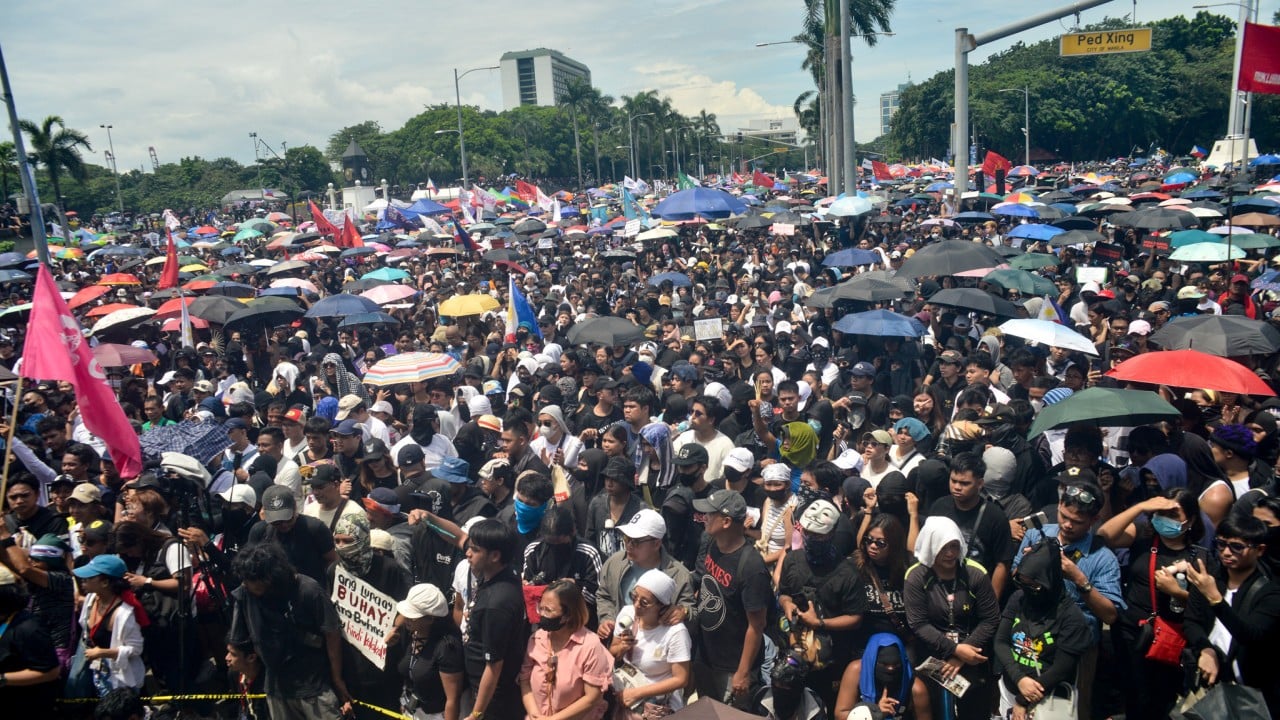Mass protests swept across the Philippines as Super Typhoon Ragasa approached, with citizens from all walks of life venting outrage at deepening corruption, particularly over the alleged plunder of funds from flood control projects meant to shield communities from disasters.
Advertisement
The demonstrations in cities across the country that took place on Sunday – loosely organised through social media, university groups, churches and word of mouth – marked perhaps the country’s largest protests in years without centralised leadership. Observers said their spontaneous and chaotic nature reflected deep discontent – but also raised the risk that things could spiral out of control.
At least 61,000 people attended the protests, estimates from the Philippine National Police showed.
“This is a very dangerous and hopeful period,” Randolf David, professor emeritus of sociology at the University of the Philippines, told This Week in Asia on Monday.
He said it was “not far-fetched” to believe that the protests could ultimately lead to a change of government.

Public anger has surged since August amid revelations of “ghost” flood-control projects and irregularities in infrastructure spending. Lawmakers uncovered over 545 billion Philippine pesos (US$9.5 billion) in contracts since 2022 – the start of President Ferdinand Marcos Jnr’s presidency – tied to substandard, undocumented or entirely unbuilt projects.

